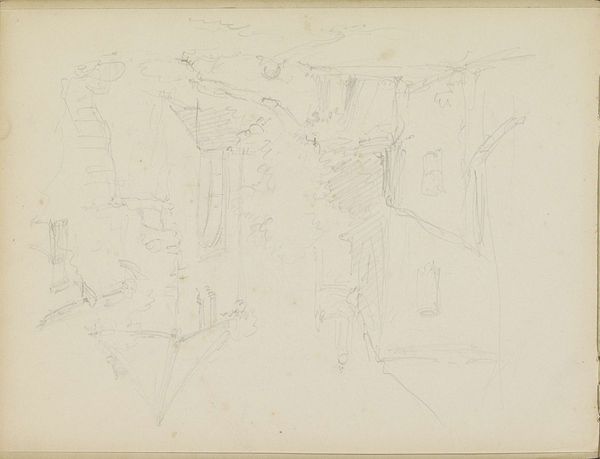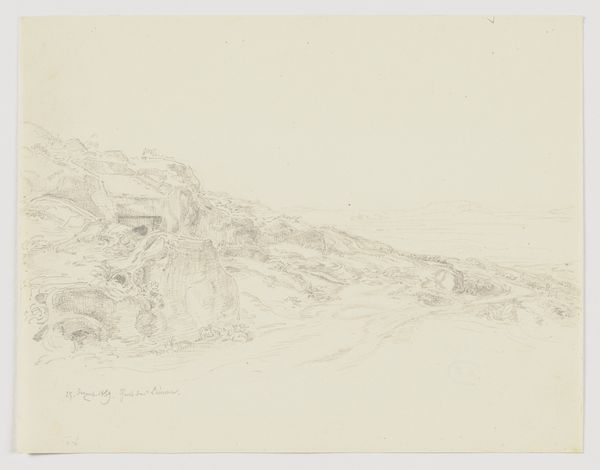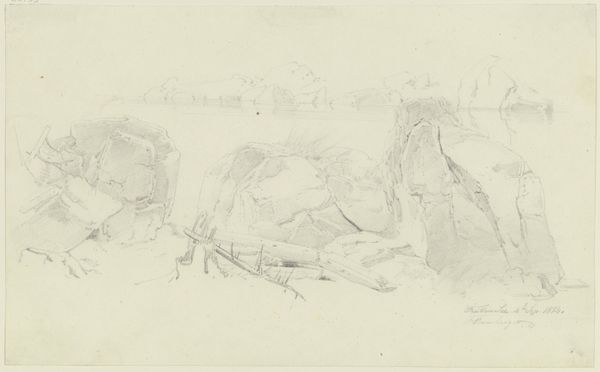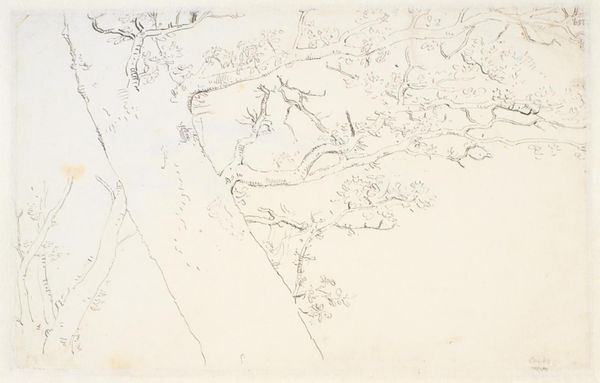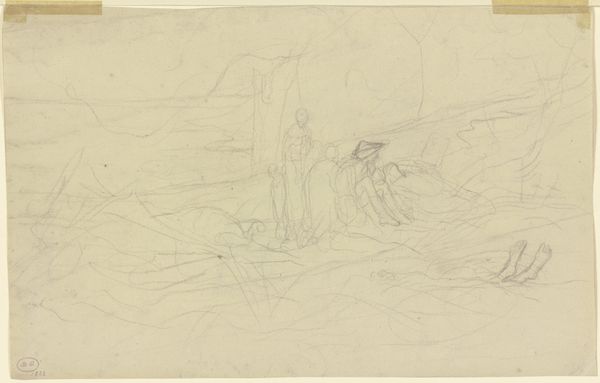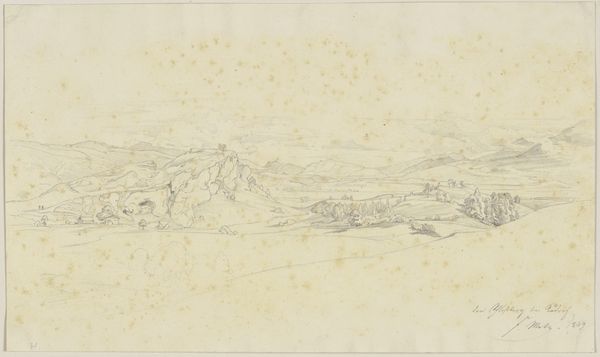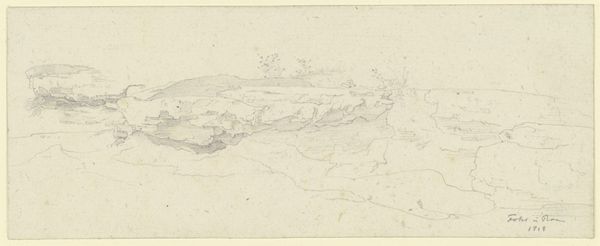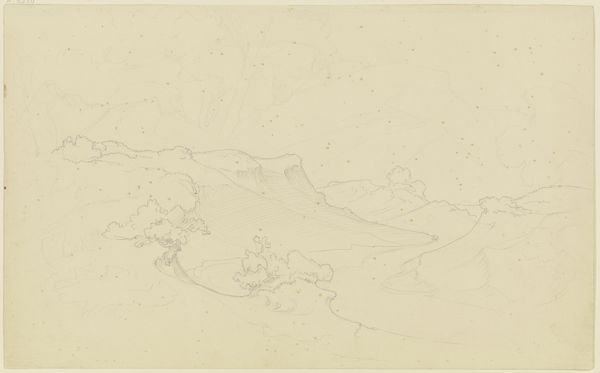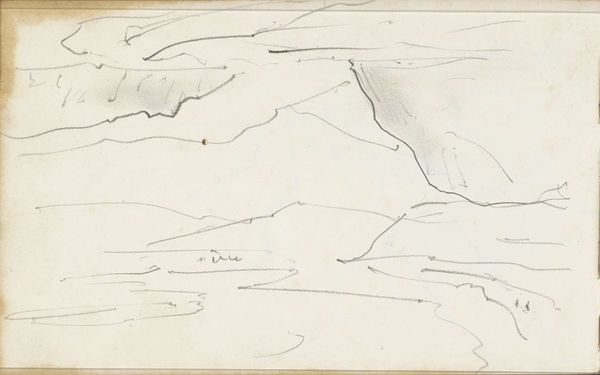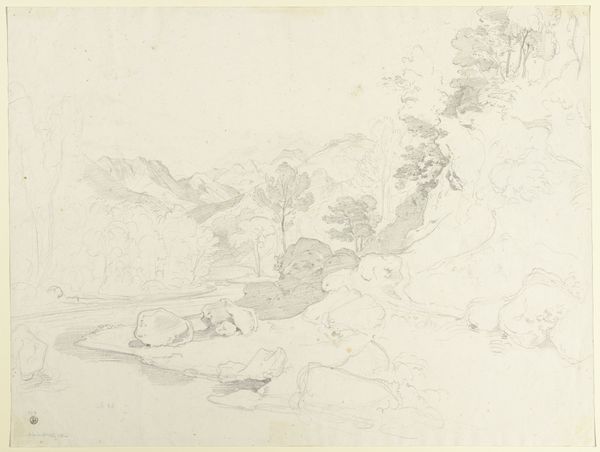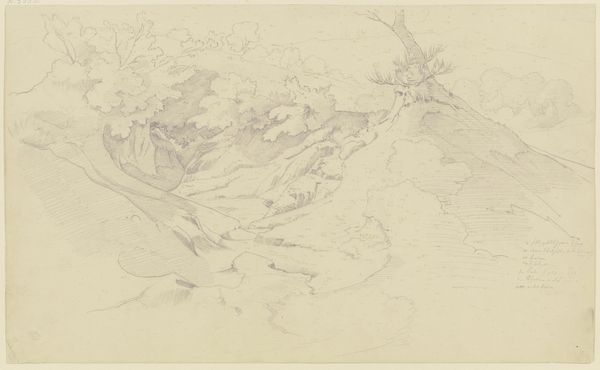
Steinbrüche bei Maasara, aus welchen der Kalkstein für den Bau der Pyramiden entnommen wurde 25 - 1829
0:00
0:00
drawing, paper, dry-media, pencil, graphite
#
drawing
#
16_19th-century
#
pen sketch
#
pencil sketch
#
landscape
#
ancient-egyptian-art
#
paper
#
dry-media
#
personal sketchbook
#
egypt
#
pencil
#
graphite
Copyright: Public Domain
Curator: Friedrich Maximilian Hessemer's pencil and graphite drawing, dating from 1825 to 1829, captures the stone quarries at Maasara—a place of profound significance. Editor: The skeletal quality of the drawing is quite haunting. You see these pale layers of stone under a fragile sky—it feels almost like looking at geological remains and I am struck by how remote it is. Curator: Hessemer's focus lies primarily on structure, as well as spatial depth. Note how he has rendered the quarry with strong diagonals that draw the viewer’s eye through the varying planes of the rock face. His use of subtle graphite tones captures a range of textural variation—the layering is really beautiful. Editor: But that focus on structure conveniently overlooks that this is not just rock. This site provided the very limestone used by enslaved workers to build the pyramids. It forces us to acknowledge the backbreaking labor extracted from those whose bodies built monuments to power. Curator: I understand your reading, but perhaps Hessemer was attracted by a different set of dynamics? If we consider the work's internal relationships we could suggest that there is a romanticization of the sublime. The artist has deliberately omitted any figures that could provide a sense of scale; this amplifies the sheer magnitude of the site itself, diminishing any narrative references. Editor: That ‘sublime’ vision comes at the cost of erasure. Can we truly divorce the quarries from their history of forced labor and exploitation? The absence of figures isn't neutral; it silences the voices and struggles of countless individuals reduced to mere tools in service of pharaonic power. I can appreciate that this is a quick travel sketch made during a study trip to Egypt, but these power dynamics resonate to our current day when certain bodies become sacrifice zones in pursuit of progress or so-called advancement. Curator: Thank you. Your arguments give me much to consider. Editor: Likewise. It is in holding space for complexity where any true reading emerges.
Comments
No comments
Be the first to comment and join the conversation on the ultimate creative platform.
